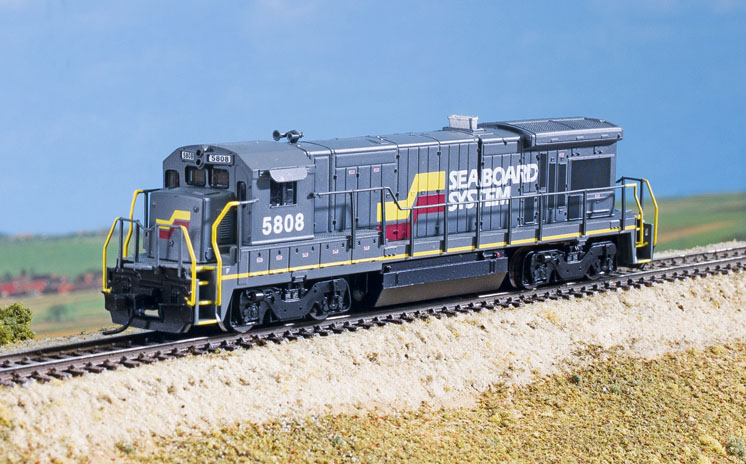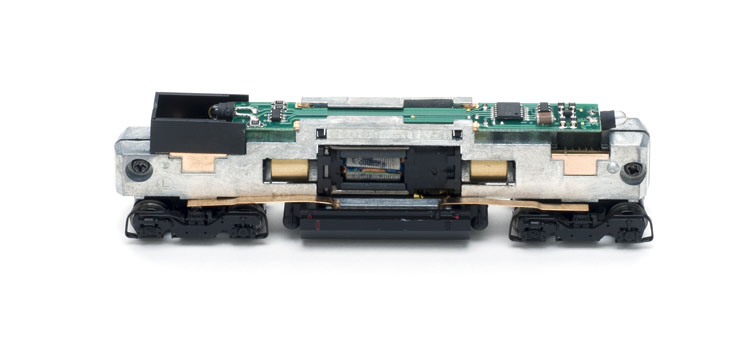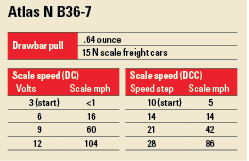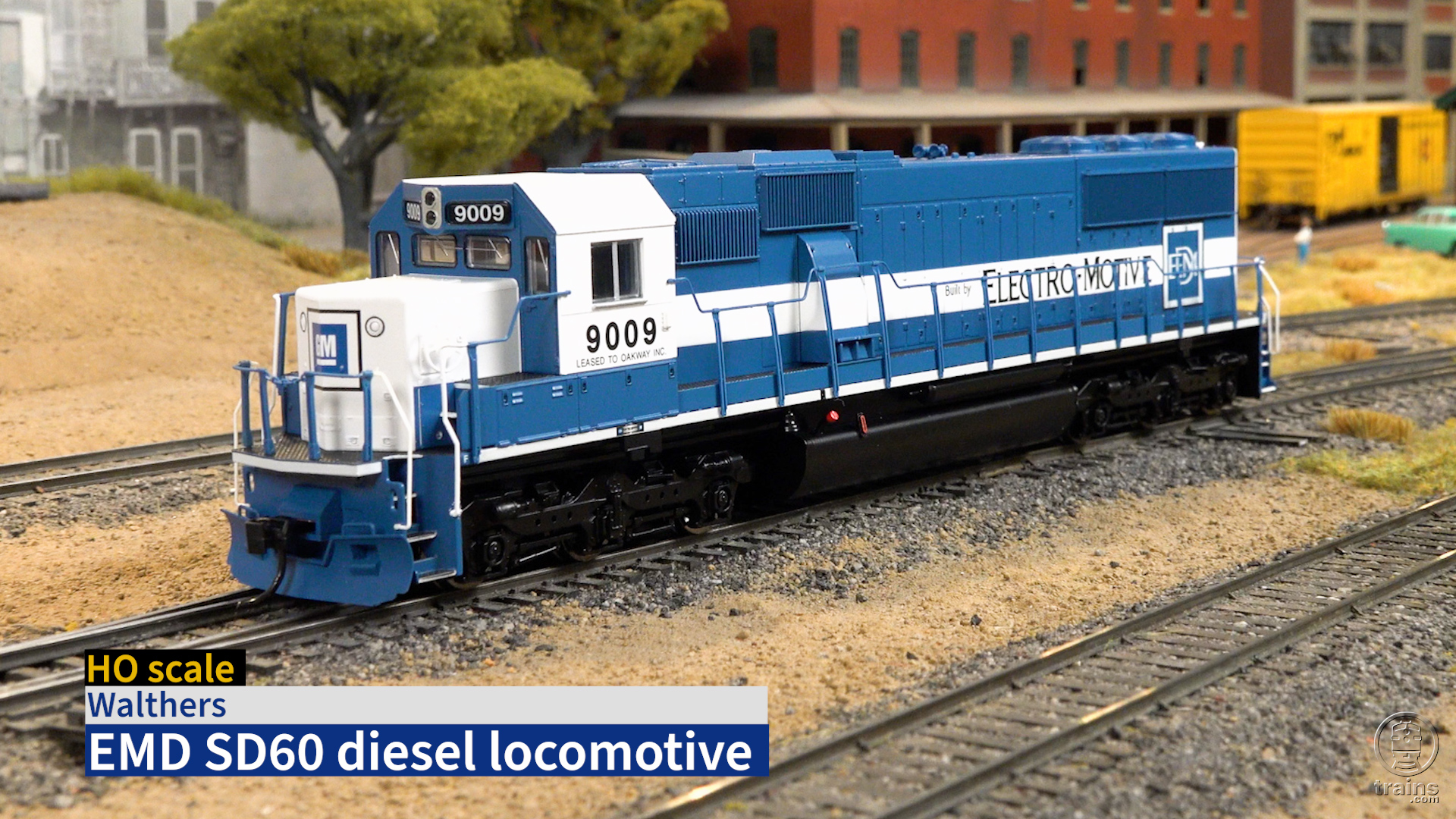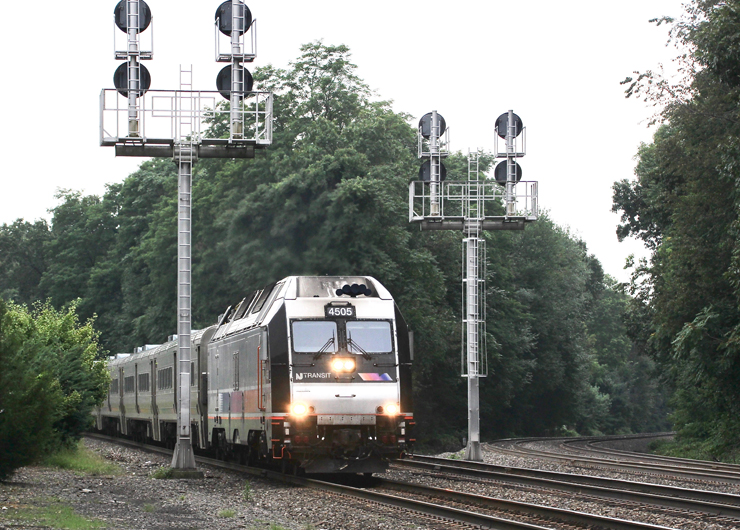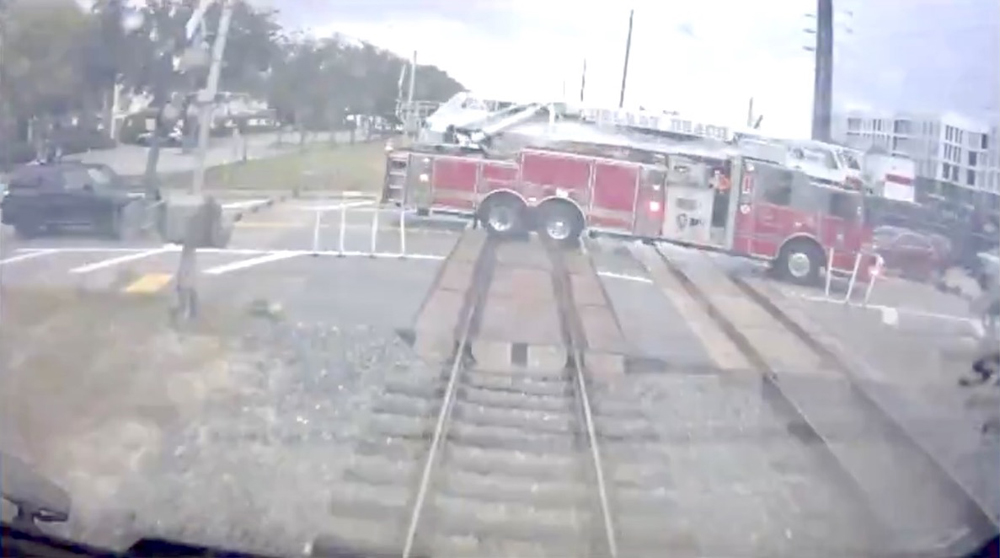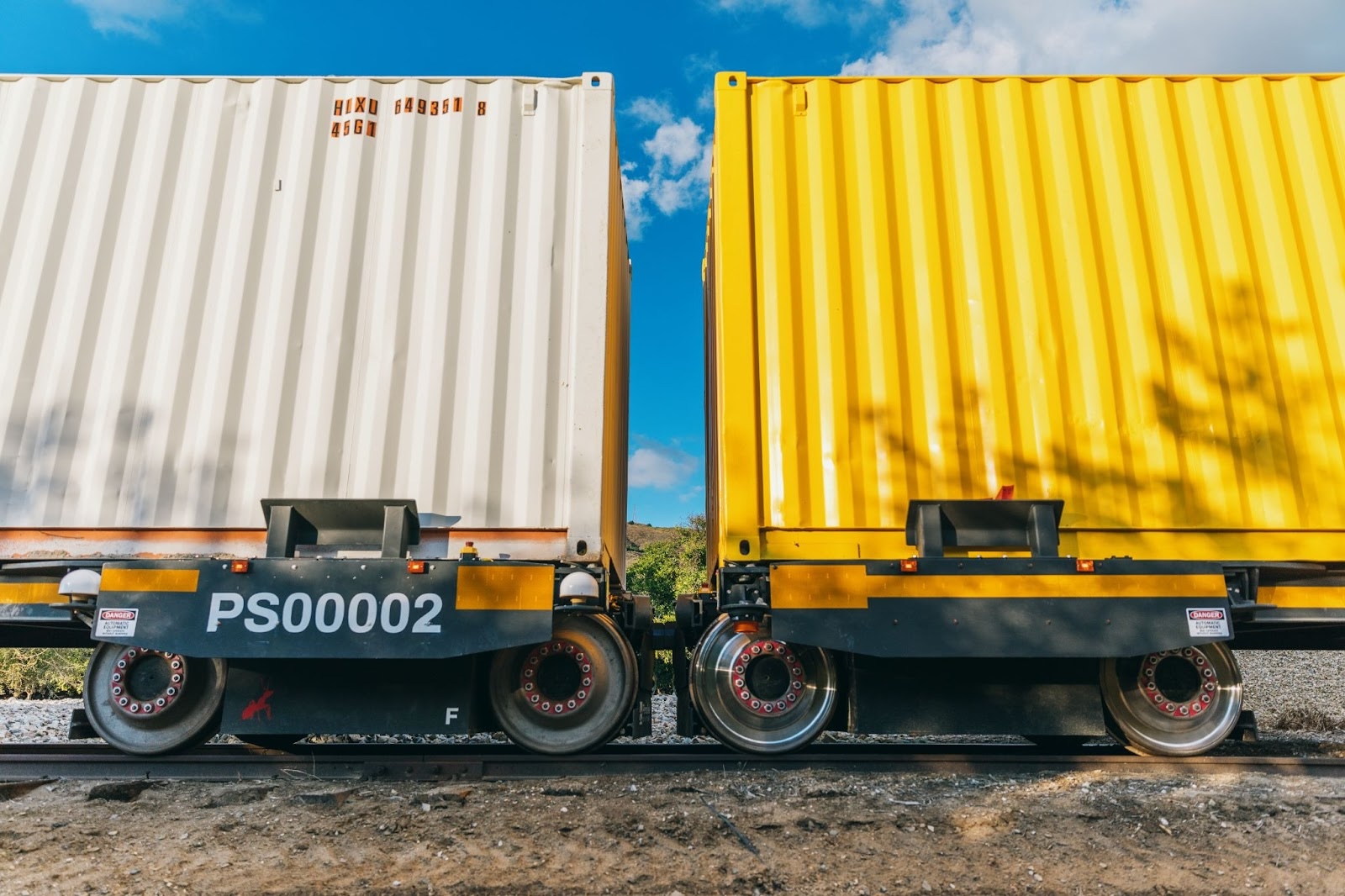Packing 3,600 hp under its hood, the General Electric B36-7 was just what Seaboard System wanted when it placed an order for 120 units in 1985, more than doubling the production total of the locomotive. Now, Atlas Model Railroad Co. has re-released its line of B-B truck Dash-7s in new paint schemes, including the B36-7 in Seaboard System and successor CSX paint schemes.
The prototype. The B36-7 was the last of the four axle, or B-B truck, locomotives offered in the Dash-7 line. Introduced in 1976 to replace its Universal line of road-freight locomotives, GE’s Dash-7 line differed from is predecessors by having a bumped-out radiator compartment. The widened section starts just ahead of the exhaust stack.
Externally identical to the predecessor 3,000 hp B30-7, and riding on General Electric’s FB2 floating bolster trucks, the new locomotive developed its 3,600 hp from a GE 7FDL16 diesel engine. The eight tall doors in the middle of the hood indicate a 16-cylinder engine sits inside instead of a 12-cylinder engine.
General Electric’s Erie, Pa., plant sent 230 B36-7s out the door. Seaboard’s locomotives later saw service on CSX, which retired its Dash-7s by the end of 2010. Conrail had the next-largest order, at 60 units. The remaining 50 units were split between Atchison, Topeka & Santa Fe; Southern Pacific/St. Louis Southwestern; Southern Ry.; and eight units to the Carrejon coal project in Colombia.
Though out of Class 1 railroad service, there are photos online of B36-7s working on regional and shortline railroads as recently as December 2015.
The model. Atlas’ B36-7 measures out to within a few scale inches of GE drawings reproduced in General Electric Advanced Generation Diesel-Electric and Electric Locomotives by James W. Kerr (Delta Publication Associates, 1989).
The models have plastic shells with molded-on grab irons and pilot details. The horn, silencer exhaust stack, radiator grills, brake wheel, cab sunshades, snowplows, and drop steps are separately applied. The one-piece molded trucks include brake cylinder, snubber, and sand line details.
Flexible plastic handrails are painted to match the carbodies on our two gray examples, Seaboard 5808 and CSX 5811. The paint on both samples was smooth and opaque, with sharp separations between colors. The electrical equipment cabinet warnings were all legible under magnification.
All of the photos I could find of our sample Seaboard System and CSX locomotives showed the horns located above the headlight on the cab roof, rather than over the control compartment behind the cab as it is on the model.
Under the hood. I used a small screwdriver to coax the body shell from the die-cast metal underframe. This chassis design, with a split frame clasping the motor, trucks, and Digital Command Control (DCC) circuit board, has graced many Atlas diesels.
All wheels are powered through driveshafts attached to brass flywheels on both ends of the motor. Power is transferred from the wheels through bronze wipers that ride on the trucks and energize the frame halves. Directional golden-white light-emitting diodes (LEDs) illuminate the headlight, rear light, and number boxes.
On the test track. I started testing the Atlas B36-7 with an NCE Digital Command Control (DCC) Powercab. Out of the box, the locomotives didn’t start moving until speed step 10. One model also had a click in its gait, the result of an errant bit of plastic in the rear truck’s gearbox. A little cleaning with a toothpick had it operating smoothly.
To get the locomotive to move in speed step 1, I adjusted Configuration Variable (CV) 2, starting voltage, in the NCE/Atlas AN12A0 decoder. The decoder user’s manual is available on the Atlas website (www.atlasrr.com/pdf/AN12A0.pdf). By setting the value on the Seaboard locomotive at 52, I got the locomotive to move in speed step 1 at a scale 2.5 mph. The CSX locomotive responded well with CV2 set at 39.
While I was at it, I added momentum using CV3 (acceleration momentum) and CV4 (deceleration momentum) and changed the addresses of the locomotives to match their road numbers. The modifications were quick and easy. The adjusted locomotives reached a top speed of 82 scale mph at speed step 28.
Our drawbar test showed the locomotive capable of pulling a 15-car train of free-rolling N scale freight cars on straight and level track, but I found the Atlas B36-7 could pull 21 cars around our 2014 Red Oak N scale project layout. While the track is level, it curves around both ends of the layout. With the adjustments to the CVs, it was easy to couple to the train and accelerate from rest.
On direct current (DC), the locomotives ran great without changing the factory settings. I tested the locomotives on DC to determine if the problems with starting speed were mechaninical or electronic. The headlight came on and the locomotive started moving at a barely perceptible crawl at 3V. At 12V, the engine reached 104 scale mph – considerably higher than the prototype, but also much slower than the traditional top speed of many N scale locomotives.
Atlas has a solid performer on its hands, and the added paint schemes for the B36-7, and its cousins B23-7 and B30-7, make this fine locomotive appealing to a broader audience.
Price: $124.95, DC; $159.95, DCC
Manufacturer
Atlas Model Railroad Co. Inc.
378 Florence Ave.
Hillside, NJ 07295
Era: 1980 to 2010 (as decorated)
Road names (Three road numbers each): CSX, Seaboard Systems. Undecorated version also available.
Features:
▪▪AccuMate magnetic knuckle couplers at correct height
▪▪Metal wheels in gauge
▪▪NCE motor decoder (DCC-equipped models only)
▪▪Slow-speed motor with dual brass flywheels
▪▪Directional lighting with golden-white light-emitting diodes
▪▪Weight: 2.6 ounces





